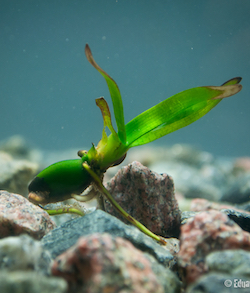ABSTRACT
Waves and currents influence not only the spatial distribution of seagrass meadows but also the transport, establishment and survivorship of seagrass propagules and hence the success of seagrass recruitment from sexual reproduction. We quantified the dispersal of propagules of three seagrass species (Posidonia oceanica, Cymodocea nodosa and Zostera marina) over substrata of different complexities (sand, coarse gravel, and P. oceanica matte of different shoot abundances) under unidirectional flow in a hydraulic flume.
Threshold velocities indicate that Z. marina seeds start to move earlier over a flat sandy bottom (14 cm s-1) than P. oceanica (20 cm s-1) and C. nodosa (21 cm s-1) seeds. Propagule trapping increased with bottom complexity, which was related to the flow reduction that each substratum generated and their boundary layer thickness. Trapping rates were higher in coarse gravel and in high dead shoot abundance matte, where flow was reduced more than 50 %.
Over sand, flow reduction was minimal and propagules were not trapped. Furthermore, notable differences between P. oceanica early life stages were observed, being seeds trapped first, followed by seedlings of increasing ages, which appears to be related with the reduction of the frontal area and higher settling velocity of the younger stages. Together these results provide important insights into the drivers of seagrass recruitment, which are of interest for restoration purposes and numerical modelling.













